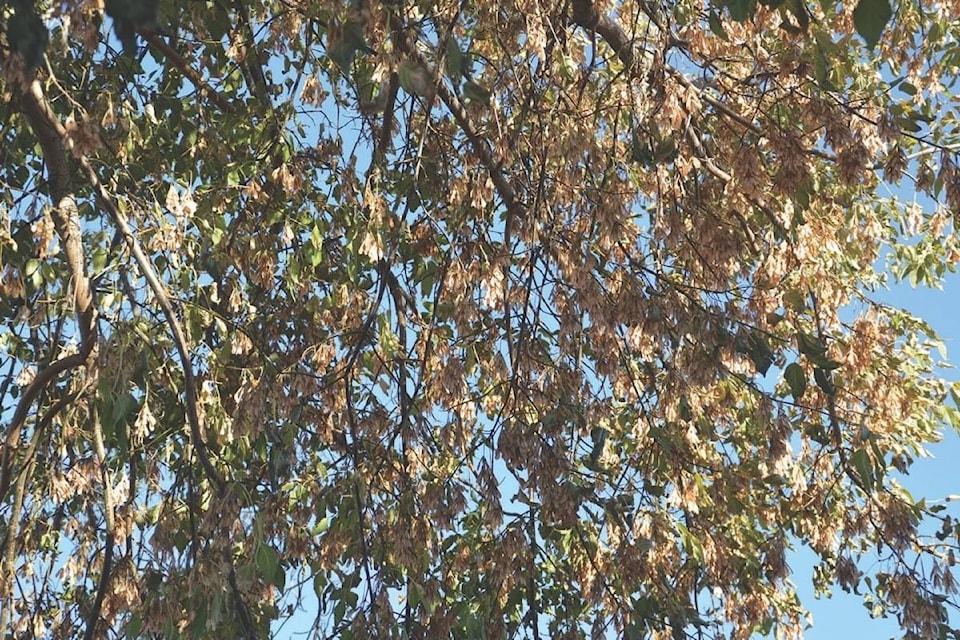Think field windbreaks no longer serve a purpose in this age of zero till practices and improvements in technology? Toso Bozic, bioenergy and agroforestry specialist with Alberta Agriculture and Forestry explains why there needs to be a rethink about their importance.
Previous generations learned that leaving trees along fence lines or in their fields helped reduce soil and water erosion, says Bozic. “After the so-called Dirty Thirties, provincial and federal governments launched incentives for farmers to plant trees. Countless trees were planted around farm yards as well as field windbreaks to keep moisture on the land, avoid snow drifting, protect livestock, as well as to increase crop yields and physically protect sensitive crops from high winds.”
Changes in farming over the last 30 years has reduced soil erosion through zero tilling, the use of larger equipment, and improvements in technology and crop genetics. Bozic says there is a feeling that windbreaks are not really needed anymore. “However, as this long winter and the spring melt has shown us, surface field run-offs in many parts of the province damaged culverts and bridges, caused roads to wash out, and flooded property. We need to rethink the importance of field windbreaks.”
“Planting new windbreaks needs be considered,” Bozic adds. “They reduce the cost to our infrastructure, increase yields, and provide great environmental benefits to crops.”
Field windbreaks work by preventing high winds from blowing snow or water into ditches or onto roads. They are designed to keep and spread snow evenly across the fields. When that snow melts, the moisture soaks in and does not just run off the field.
“Choosing particular shrubs or trees, as well as proper spacing, controls the density and height of these windbreaks,” explains Bozic. “The snow is evenly distributed though the field and spring runoff is reduced with a low density windbreak. With higher density planting, the snow will not accumulate evenly. Instead, the snow will be trapped on the leeway side of the windbreak. These dense windbreaks are planted to avoid snow drifting onto roads and highways, to protect livestock, and to recharge our dugouts.”
Field windbreaks are also valuable to flora and fauna. Says Bozic, “Their environmental value is measured by the amount of wildlife species using these areas for food, cover, and shelter protection, as well as many beneficial insects, bacteria, viruses and fungus that greatly contribute to the overall health of our crops.”
Bozic adds that he recognizes the inconvenience that windbreaks could cause with larger equipment, “But, because of technologies like GPS, cameras, and drones, that inconvenience is overstated. I have seen many older windbreaks that function well in large fields with large equipment. Those producers say the benefits outweigh any inconvenience, and that is why they aren’t clearing windbreaks or old natural fences.”
For more information about windbreaks, contact Toso Bozic at 780-415-2681.
Know your mineral rights
An overview of freehold mineral rights in Alberta is now available on the Farmers’ Advocate Office (FAO) website.
“Many freehold owners are not well-informed about how freehold rights differ from surface rights,” explains Jeana Schuurman, rural engagement and communications specialist with the FAO. All land in Alberta has two sets of title: surface rights and subsurface rights. The majority of subsurface rights are held by the Crown, but a minority of mineral rights are held privately by companies or individuals. These are called “freehold mineral rights.” Approximately 10 per cent of subsurface rights are freehold in Alberta.
Freehold Mineral Rights in Alberta is designed to provide basic information about freehold mineral rights in Alberta. “Our office generally does not get involved in freehold mineral rights issues or negotiations because they are usually more complex than surface rights,” explains Schuurman. “We wanted to take the opportunity to encourage freehold owners to get legal advice from an experienced lawyer with specific knowledge in the field if they are contemplating signing a freehold mineral lease or have encountered issues with an existing lease,” states Schuurman. The FAO does not provide compensation or valuation advice.
The Freehold Owners Association (FHOA) is another important resource for freehold mineral owners. The FHOA was established in 1999 with the goals of providing information for freehold mineral owners and advocating for its members. More information on the FHOA is available at fhoa.ca.
Download Freehold Mineral Rights in Alberta at http://www1.agric.gov.ab.ca/$department/deptdocs.nsf/all/ofa16605. Hard copies can be ordered by calling the FAO through the Ag Info Centre at 310-FARM (3276).
Submitted by Alberta Agriculture
